SPRING PROGRAM TIPS AND INFORMATION
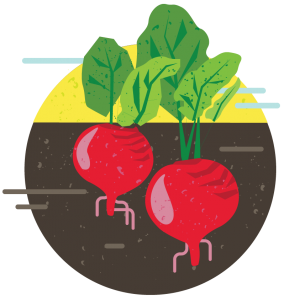 Spring is a wonderful time in Illinois! As the ground warms up, so can your Harvest of the Month Program. Many fruits and vegetables are planted in the spring which provides a great hands-on opportunity for garden programs. There are also harvest items that grow quickly and produce continuously, such as leafy greens, that are easy features for Harvest celebrations.
Spring is a wonderful time in Illinois! As the ground warms up, so can your Harvest of the Month Program. Many fruits and vegetables are planted in the spring which provides a great hands-on opportunity for garden programs. There are also harvest items that grow quickly and produce continuously, such as leafy greens, that are easy features for Harvest celebrations.
Other veggies, like asparagus, peas, and radishes, begin their peak availability season in May and are also good options for Harvest of the Month.
It’s spring- so get planting!
Spring is a wonderful time in Illinois! As the ground warms up, so can your Harvest of the Month Program. Many fruits and vegetables are planted in the spring which provides a great hands-on opportunity for garden programs. There are also harvest items that grow quickly and produce continuously, such as leafy greens, that are easy features for Harvest celebrations.
Divide and Conquer
Tastings and Immediate Use Planting Plans
Processing and Later Use Planting Plans
LETTUCE
This fantastic food can be easily grown indoors and out!
Lettuce is a crop that is grown across the U.S. This vegetable is a spring and fall crop requiring cool temps and bright light from direct sunshine or indoor grow lights. Lettuce is the “race car” of veggies with a short growing period of 30-45 days!
When you consider the possibilities, anyone can grow lettuce from seed in a window or a tented outdoor structure such as a cold frame or low tunnel with very little fuss. Using the “cut and pick again” method lettuce can be seeded in rows outdoors or in containers indoors every other week to provide a continuous harvest. Loose leaf and micro varieties are the easiest to grow using this method and are the most productive.
There are multiple variations for lettuce production including outdoor field planting, growing in low or high tunnels and cold frames, and indoor production in a greenhouse, hydroponic or aquaponic applications. Lettuce can be easily grown indoors in school hallways, in classroom windows, in a library or art room, greenhouse or even in the cafeteria! If you have an outdoor school garden, the addition of cold frames will extend your garden season by weeks in the spring and fall, providing seasonal produce for tastings and your meal lines. If you are growing indoors there are many ways to grow and harvest this versatile veggie!
Vertical growing units, or growing walls, can be constructed from inexpensive or reclaimed materials and installed in your school to create an amazing food production system! Growing walls not only provide food, they bring a natural beauty into the space and are a wonderful spot for students to read and study. A rolling, self-contained hydroponic unit, such as a tower garden, can be placed on display in school cafeterias during mealtime to peak student interest in healthy meal choices, and then moved from classroom to classroom to be incorporated into science, math and other curricula. The possibilities are endless when planning to grow lettuce!
Do you want to learn more about cold frames or indoor growing methods? Check out these websites for options and tips. Share your ideas with school staff, form a plan, and then search for gardening grants and tools in our monthly newsletter, or on our website to grow support for your garden project. 
- The Green Wall Project
- MotherEarthNews-gardening with cold frames
- CivilEats- Chicago High School Grows Hydroponically
- Growing Bottle Lettuce
- Soda Bottle Vertical Project
- How To Grow a Vertical Garden
check out more garden resources here
Featured Recipe: BBQ Ranch Chicken Chopped Salad
Cooking and Prep Level: Intermediate
Servings: 100
This recipe showcases scratch made, shelf-stable spice blends.
What’s the easiest way to get kids in line at lunchtime? Offer a salad with both Ranch and BBQ flavors! This recipe utilizes scratch made spice blends, cutting out the heavy sodium levels and chemicals in pre-made blends. USDA chopped chicken becomes a star ingredient when it’s paired with BBQ and Ranch seasonings! This recipe works well as a self-serve entree in an individual clam-shell, or as an easy bulk service entree served from hotel pans. With a sure to please taste, using kid-friendly ingredients and flavors, what’s not to love?
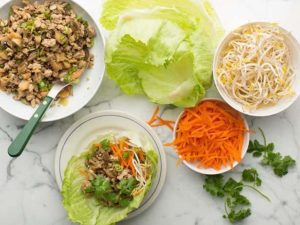 More LETTUCE recipes for April:
More LETTUCE recipes for April:
Kewl (cool!) Tuna Salad Flat Bread (use up that USDA tuna!)
Try Chicken Caesar Salad on the school lunch tray and send the Quick & Easy Lettuce Wraps recipe to your school families at home to create a great promotion! By promoting your Harvest of the Month program on the meal line, and at home, you can create multiple food exposures and drive up participation.
We have two family recipes and five food service recipes for April. You can check them out here!
Lettuce Fun Fact: A History of Salad!
In the United States, head lettuce was for many years commonly cut and served as a wedge, covered simply with mayonnaise or another dressing, and eaten with a knife and fork. Wedge Salads were popular in fine dining and Mom & Pop restaurants, alike. This simple Wedge Salad was served less frequently as other specialty salads hit the dining scene. In 2015 popular restaurant chains began re-introducing the Wedge with new, imaginative ingredients and bold dressings. Today, the Wedge is slowly making a comeback!
The always popular Caesar Salad is made only with leaves of romaine lettuce tossed with a special dressing, including a raw egg and small pieces of anchovy. Legend has it that Italian-American restaurateur Caesar Cardini invented the salad in 1924 in Tijuana, Mexico. According to The Telegraph, Cardini owned a restaurant in the tourist destination to “attract Americans frustrated by Prohibition.” The exact story is disputed, but the general consensus is that over Fourth of July weekend, Cardini threw together a bunch of ingredients he had on hand and served his concoction to his friends. Needless to say, the improvised dish caught on. (Source: The Origins of Caesar Salad, from huffingtonpost.com)
In parts of the American South the Wilted Lettuce Salad, or killed “kilt” salad is a family favorite made by pouring a warm dressing made with bacon fat and vinegar over lettuce leaves to produce a wilted effect. Much like German Potato Salad, this lettuce salad has a sweet/sour flavor profile due to the perfect balance of vinegar and sugar in the dressing. (Source: TheSpruceWiltted”Kilt”Salad)

A relative newcomer to the salad scene is mesclun, a mixture of baby leaves consisting of several lettuce types and other leafy vegetables, some of which are fairly exotic. These may include arugula or rocket, actually a partially domesticated weed; a fine-leaved endive called frisée; mizuna, a small, dark green round leaf from Japan; spinach, beet tops, or chard; red chicory (radicchio); and romaine, butterhead, and red and green leaf lettuces. These leaves are cut in the field by hand or mowed when they are no more than ten centimeters long.
(Source: Encyclopedia.com)
Here are more Lettuce fun facts from our website. These can be utilized as fun meal line signage to draw attention to your Harvest of the Month!
It’s All About Romaine:
- Romaine is the American term for this long-leafed lettuce, also called cos or cos lettuce (mainly with British-speaking peoples) because it is said to have originated on the Greek island of Cos (Kos), off the coast of Turkey in the Aegean Sea (also the birthplace of the physician Hippocrates).
- Its original home is in western Europe and the eastern Mediterranean area. Romaine has been cultivated and eaten cooked or raw for almost 5,000 years and may very well be the oldest form of cultivated lettuce.
- In 2015, the crew aboard the space station got their first taste of Romaine lettuce, grown entirely in space! The lettuce was planted, cultivated, and harvested entirely on board the station, sprouting in a collapsible growth chamber adorably known as Veggie from “rooting pillows” under red, green, and blue LEDs. Served with a classic oil-and-vinegar dressing, the space leaves were a wild success. Astronauts dubbed them “awesome.”
(Excerpt from National Geographic’s The Plate, 8/13/15)
Lettuce Nutrition Facts:
These nutrition facts can be added to middle/high school meal lines and cafeteria signage to educate, as well as, draw attention to your Harvest of the Month! Sharing your Harvest of the Month activities with other school staff can lead to multiple exposures for your featured fruit or veggie. The more exposure kids have to a new fruit or veg, the more likely they are to accept it! Carrots may not be an issue with kids, but applying this technique to other, less popular veggies like beets or dark leafy greens can be the difference between acceptance and total disinterest. 
- It’s got more vitamin C than an orange!
- It’s got protein! What? Yep, protein!
- Lots of omega 3-which is an essential fat. Keeps you warm, keeps your hair pretty and your skin radiant.
- Lots of water! One salad made with romaine lettuce is almost a cup of water, seriously, one head has 20 ounces!
- It’s full of good things like vitamins A&K and a nice dose of potassium. Potassium almost instantly will stop leg cramping. Go ahead and put it to the test after a long day of being on your feet.
SPINACH
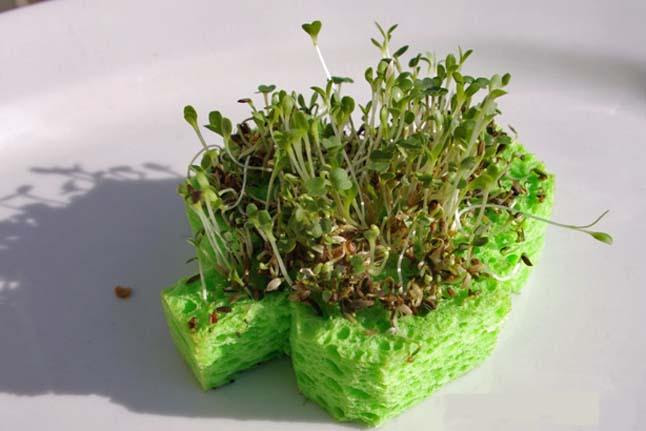 Display spinach sprouts grown on everyday sponges on the lunch lines and on tasting tables. You can even cut the sponges into a spinach leaf design before sprouting your spinach seeds! Sponge Sprouts can be utilized as a great classroom activity. Step by step directions can be found here.
Display spinach sprouts grown on everyday sponges on the lunch lines and on tasting tables. You can even cut the sponges into a spinach leaf design before sprouting your spinach seeds! Sponge Sprouts can be utilized as a great classroom activity. Step by step directions can be found here. Spinach is a powerhouse of nutrition. Create stick-figure superhero characters based on the superpowers of spinach and display them on your line and in the cafeteria. You can list each “green superpower” on a separate poster for your cafeteria walls or share these superpowers on individual sneeze-guard cards.
Spinach is a powerhouse of nutrition. Create stick-figure superhero characters based on the superpowers of spinach and display them on your line and in the cafeteria. You can list each “green superpower” on a separate poster for your cafeteria walls or share these superpowers on individual sneeze-guard cards.You can find spinach superpowers here.
Need help with veggie promotion and education? University of Illinois Extension educators have resources they can share to build interest and promote veggie education. Contact your UI EXT educator here for ideas.
Featured Recipe: Spinach and Chicken Quesadillas
Spinach Fun Fact: A Veggie with a Long History.

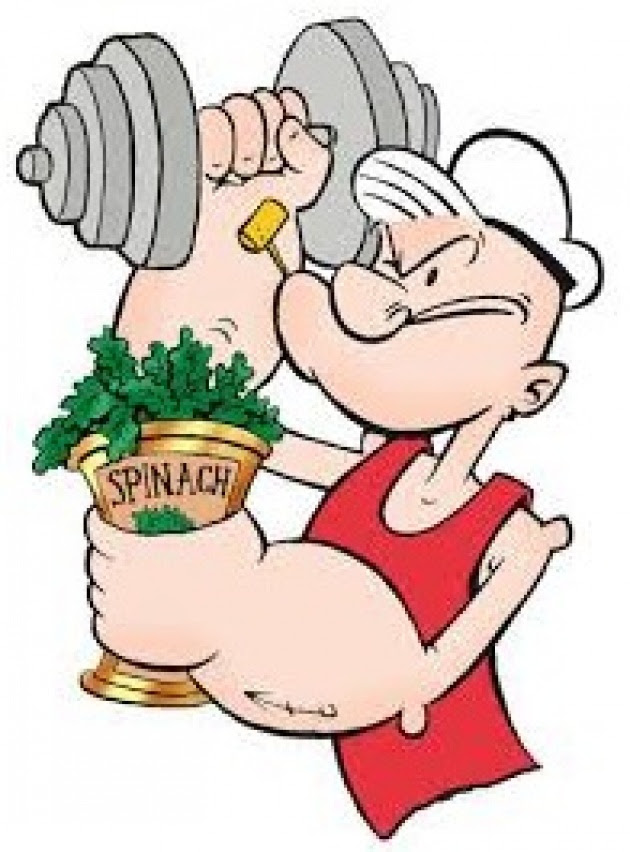 In the 1930’s U.S. spinach growers credited Popeye, a cartoon character, with a 33% increase in domestic spinach consumption – a welcome boost to an industry during the depression era. The spinach growing town of Crystal City, Texas, erected a statue of the cartoon character, Popeye, in 1937.
In the 1930’s U.S. spinach growers credited Popeye, a cartoon character, with a 33% increase in domestic spinach consumption – a welcome boost to an industry during the depression era. The spinach growing town of Crystal City, Texas, erected a statue of the cartoon character, Popeye, in 1937.Spinach Nutrition Facts:
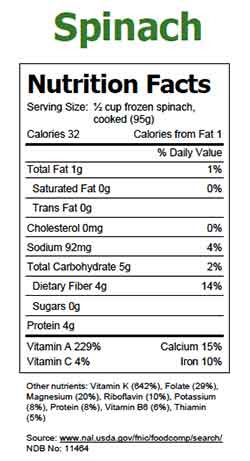
- Spinach is low in fat and even lower in cholesterol
- Spinach is high in:
- Niacin and zinc, as well as protein, fiber, vitamins A, C, E and K, thiamine, vitamin B6, folate, calcium, iron, magnesium, phosphorus, potassium, copper, and manganese.
- In other words, it’s loaded with good things for every part of your body!
Fast Growing Shoots and Sprouts Deliver!
- Much like watercress, the stems of Pea Shoots are edible — and the tendrils are just delicious. Sprouts cook very similar to baby spinach and are versatile, too. Enhance recipes with pea shoot’s or radish sprouts spring flavor.
- You can eat Pea Shoots raw in a fresh salad; they can take the place of the more traditional lettuce or simply enhance it with pea shoot’s spring flavor.
- You can share whole shoots in taste tests with young children. Eating a live plant will excite and engage your kids!
- You can stir fry them with sesame oil and garlic, as has long been done in Asian cooking.
- Like microgreens, shoots of any type are grown in soil. In growing shoots, the young greens are eaten, being at their nutritional peak.
- You can grow them in any drainable container like buckets, cups, trimmed down plastic water bottles, in egg cartons, even in the egg shells themselves. A sunny windowsill and water is all you will need. Many beans and seeds may easily and very quickly sprouted indoors.
- When sprouting outside of soil, seeds soaked in water begin to germinate and produce a sprout, a young growth.
- Besides vitamins C, A, and K, sprouts contain fiber, manganese, riboflavin, copper, protein, thiamin, niacin, vitamin B6, pantothenic acid, iron, magnesium, phosphorus, and potassium. The amounts these vitamins and minerals impart generate benefits for nearly every area of the body.

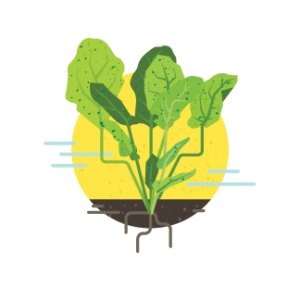 Access the Illinois Farm to School Garden Toolkit
Access the Illinois Farm to School Garden Toolkit 


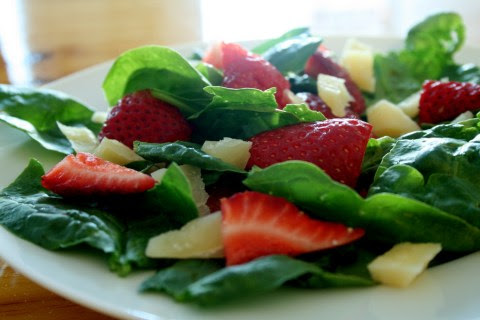 More SPINACH recipes for Spring:
More SPINACH recipes for Spring:

